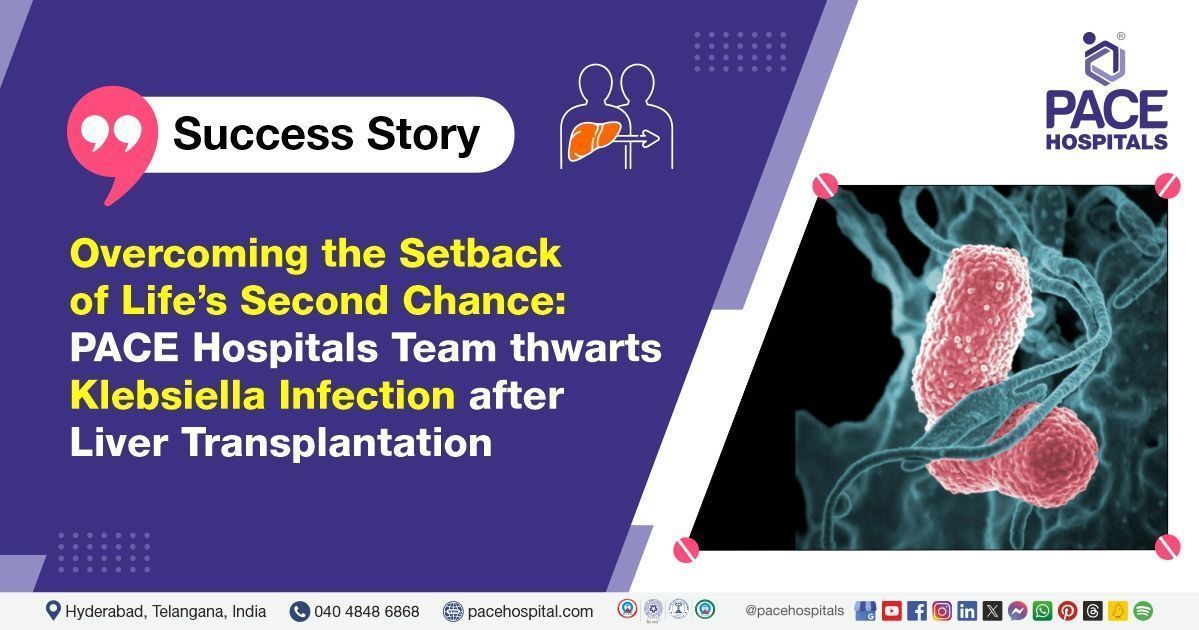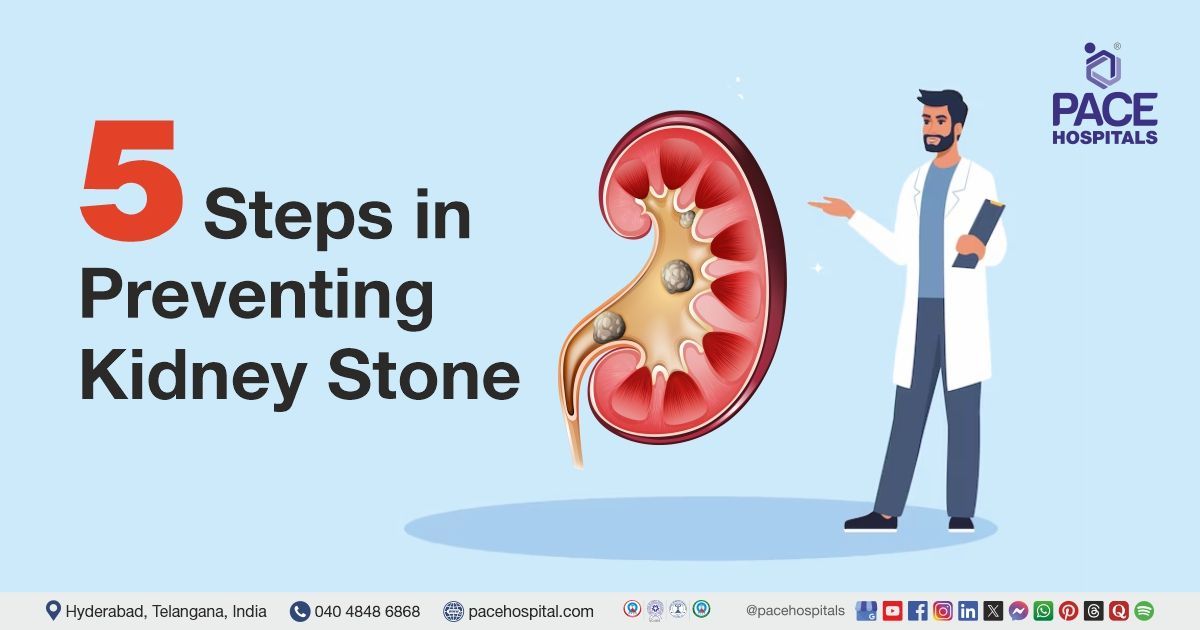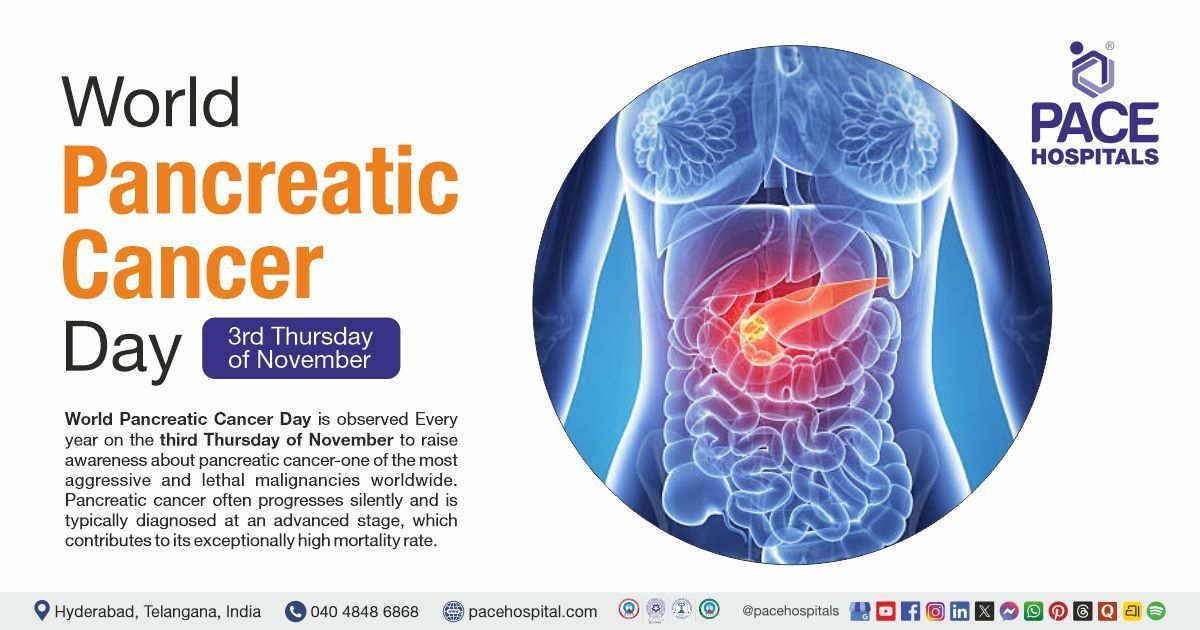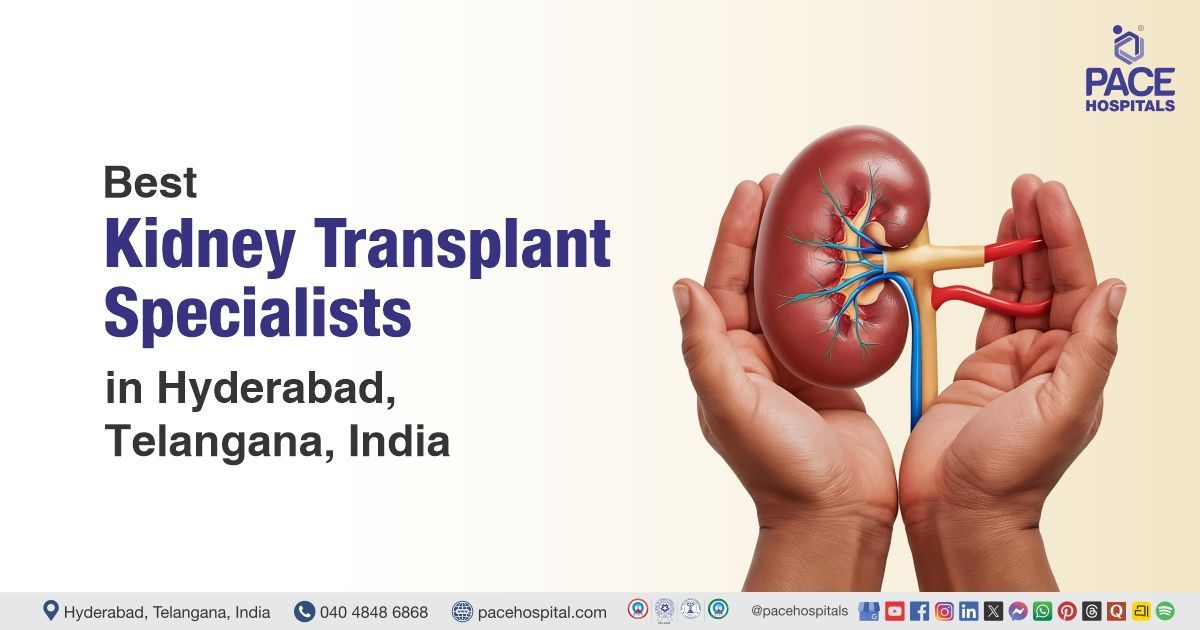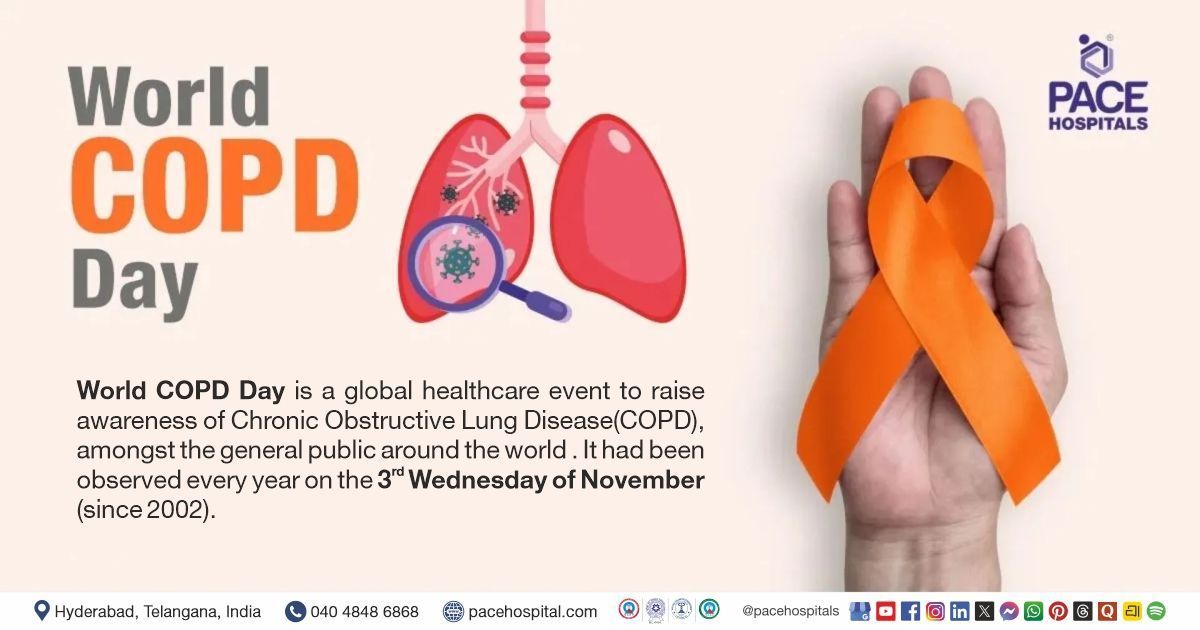PACE Hospitals team thwarts Klebsiella Infection after Liver Transplantation
Pace Hospitals
Pace Hospitals' transplant team successfully performed a deceased donor liver transplant for a 52-year-old female patient with decompensated chronic liver disease. Post operation, she developed Klebsiella pneumoniae infection, but the timely intervention by PACE team cured the disease.
Chief complaints
A female patient aged 52 years, with a
BMI of 22, is a known case of decompensated chronic liver disease and presented to
PACE Hospitals, Hitech City, Hyderabad, with complaints of
jaundice and intermittent fever.
Medical History
Delving deeper, it was understood that the patient had been experiencing jaundice for 4 months, which was frequently associated with intermittent fever. Understanding the severity of the situation, the patient was asked to get admitted to the PACE Hospitals for further treatment.
Diagnosis
Upon being admitted to PACE Hospitals and understanding the history and physical examination, the patient was subjected to imaging tests and liver biopsy, among other investigations. The biopsy provided impressions of distorted hepatic parenchymal architecture with complete nodule formation. The fibrous septae surrounding the nodules depicted inflammatory cells. All these depictions are consistent with:
Liver cirrhosis of the liver (possibly arising from non-alcoholic steatohepatitis) with COPD
After a complete assessment, the patient was advised to undergo
Liver Cirrhosis Treatment
in Hyderabad, India, under the expert care of under the specialized care of the Liver Transplant Department.
Treatment
The team of liver transplant doctors, including Dr. CH Madhusudhan, Dr. Govind Verma, and Dr. Suresh Kumar S, asserted that a liver transplant was the only way to save the patient.
The patient was kept on multiple lifesaving supports. Efforts were made to obtain a liver from donors after the party was counseled about the urgency of a liver transplant. Promptly, she was registered to Jeevandan Cadaver Transplantation Programme, Telangana, since there hadn't been any suitable family members who were able to donate a part of their liver.
Thanks to the efforts of Jeevandan, they could obtain a liver from a cadaver. With necessary investigations done & clearances obtained, which included pre-anesthesia checkup, the patient underwent
Deceased Donor Liver Transplant in Hyderabad at PACE Hospitals, receiving the left lateral segment. The procedure was supervised by the liver transplant surgeon, Dr Madhusudhan, and it was accomplished without any complications.
Aftermath
The post-operative period was uneventful, which can be evidenced by the results of thromboelastography which provided an overall assessment of clot formation, strength, and longevity of coagulation components. The coagulation components from thromboelestography were well within the normal range.
Development of fever after the transplantation prompted the surgeons for a procalcitonine test. Procalcitonine is a biomarker, the pro-peptide precursor of calcitonin, which is mainly produced by the thyroid gland, but the levels are usually very low as it is quickly converted to calcitonin.
It is believed that in the setting of bacterial infection, peripheral blood monocytes, the liver, and other tissues release procalcitonin in response to cytokines such as tumor necrosis factor, interleukin-6, and granulocyte colony-stimulating factor and endotoxin from the bacterial cell wall. Cytokines and endotoxin are also believed to halt the conversion from procalcitonine to calcitonin, thus increasing the concentrations of procalcitonine. Although procalcitonin levels were high, since no bacterial cultures were seen in either blood or drain fluid, only symptomatic treatment was provided to cure fever rather than administering antibiotics.
In post-operative period gradually, the patient developed cough with expectoration which requiring prolonged oxygen support. The pulmonologist was contacted, who opinionated for a sputum culture. It was revealed that Klebsiella pneumonia was the source of infection. Promptly, an antibiotic course was started to counter the infection.
The necessary medicines, immunosuppressives, antibiotics, proton pump inhibitors, multivitamins, antiemetics, analgesics, antipyretics & other supportive care were given along with the counselling. With the gradual development of liver enzymes in the patient’s body, the immunosuppression doses adjusted accordingly.
Once the patient achieved hemodynamic stabilisation, she was discharged with the necessary medications and the patient was advised to return for a follow-up appointment with
liver transplant surgeons in Hyderabad at PACE Hospitals. This visit will include a comprehensive evaluation, wound assessment, and monitoring of postoperative recovery.
Conclusion
This case highlights the effectiveness of advanced surgical expertise in overcoming Non-Alcoholic Steatohepatitis Treatment in Hyderabad, India, ensuring successful recovery and restoration of liver function.
A short colloquy on Klebsiella pneumoniae infections after liver transplantation
Klebsiella pneumoniae has been a known human pathogen since the late nineteenth century, when it was first isolated by Edwin Klebs.
Although Klebsiella is most often considered a nosocomial pathogen (a disease originating in a hospital), it can also cause serious infections acquired outside the hospital setting. It is estimated to be responsible for 6–8.6% of community-acquired pneumonias. Humans are the primary reservoir for Klebsiella, although these organisms may also be found in soil and water. Klebsiella is a common inhabitant of the upper respiratory tract and the bowel.
While nasopharyngeal infection rates of Klebsiella pneumoniae in the general population range from 1–6%, the incidence is significantly higher in individuals with increased risk factors.
There has been a recent surge in the prevalence of Klebsiella pneumoniae infections, largely due to the evolution of multidrug-resistant strains, which show resistance to multiple antibiotics. As a result, treatment options for infections caused by these bacteria are increasingly limited. Liver transplant doctors and specialists have observed that K. pneumoniae is one of the most commonly isolated species in infections affecting bone marrow and solid organ transplant recipients. In many case studies, the source of K. pneumoniae bloodstream infections during liver transplantation was traced to contaminated organ preservation fluids.
The most common causes of mortality within 30–180 days following liver transplantation are graft infections. Studies show that the frequency of contamination of organ preservation fluids ranges between 9.5% and 98.4%.
Pneumonia, tertiary peritonitis, and surgical site infections have been frequently reported as complications of K. pneumoniae infections in liver transplant recipients, underscoring the critical role of vigilance and preventive care by the
liver transplant doctor/specialist.
Share on
Request an appointment
Fill in the appointment form or call us instantly to book a confirmed appointment with our super specialist at 04048486868

